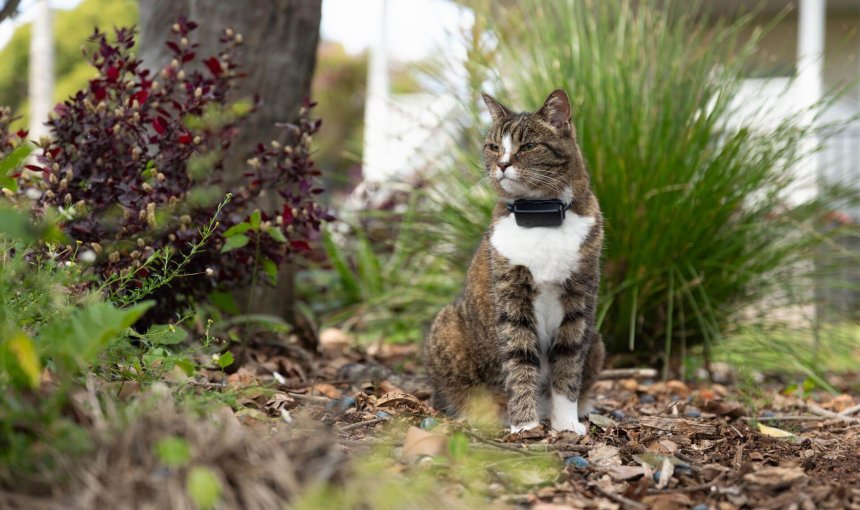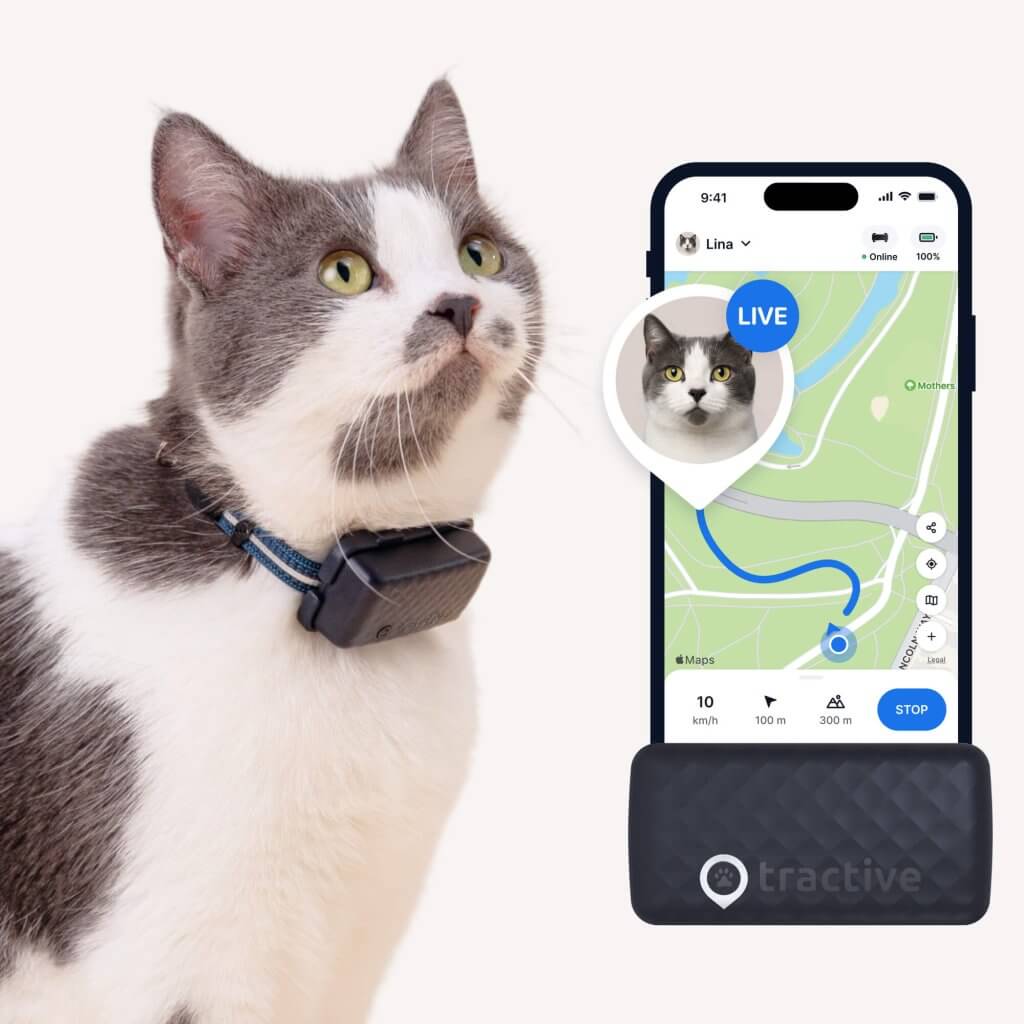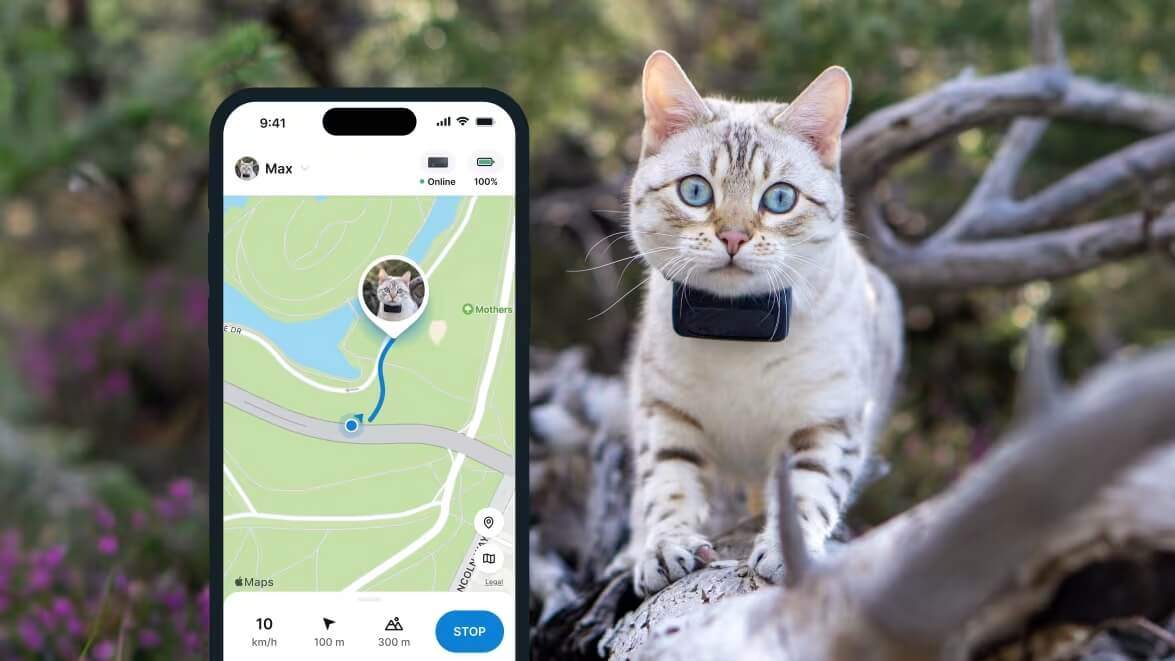10 Tips For Keeping Outdoor Cats Safe & Healthy
Your outdoor cat loves living life in the fresh air. But how do you keep them safe - without compromising on their freedom & independence? Let's start with these 10 tips.

Keeping your outdoor cat safe is priority #1. So, what can you do to make sure they’re safe when you’re not with them? Here are 10 things to consider when it comes to keeping your outdoor cat safe – including the GPS tracker that might just save their life.

Find out where your cat spends their time.
Read more- How long do outdoor cats live?
- 10 ways to keep your outdoor cats safe
- 1) Make sure someone can always identify your cat
- 2) Spay or neuter your cat
- 3) Stay on top of your cat’s vaccine shots
- 4) Consider the environment
- 5) Beware of toxic plants
- 6) Provide enough food and water
- 7) Build a cat enclosure
- 8) Keep your outdoor cat warm in winter
- 9) Train your cat to come home
- 10) Track your cat’s whereabouts
How long do outdoor cats live?
Sadly, when you let out a domesticated cat outdoors on the regular, it increases their chances of having a shorter lifespan compared to indoor kitties1. Purely outdoor cats only likely to live around 2-5 years on average. (Compared to indoor cats who might live 15-17 years by your side.)
Because while your outdoor cat might be out adventuring, there’s always the risk they might be:
- Hit by a passing car
- Poisoned by biting, licking, or tasting a toxic substance (like antifreeze) or a poisonous plant
- Injured from picking a fight with another pet or predator
- Infected by a wild animal or pests – or from environmental allergens, like pollen
- Lost and unable to find their way back home – often for weeks or months on end
- Stuck or trapped in a tight space
- Stolen by pet thieves
- Hurt by an ill-meaning person

Track your cat wherever they go
Get real-time location information, wherever they go. Find out when they go somewhere they shouldn’t, with Virtual Fences. And discover their favorite spots with Territory.
10 ways to keep your outdoor cats safe
1) Make sure someone can always identify your cat
Despite numbers having dropped over the years, it’s estimated that more than half the cats that are picked up by shelters end up being euthanized.2 Why? Because they have no identification details – so there’s no way to tell who their owners might be. So consider getting your cat:
- A proper fitting safety collar with a breakaway mechanism (check out our cat collar training guide for tips on getting your cat used to a collar)
- ID tags on the collar, with your name and phone number
- A microchip (keep your contact details up to date)
⚠️ Just remember: ID tags might fall off or become faded. And a microchip can’t actually help you locate your lost cat in real-time or over an unlimited range. (Like a GPS tracker can.)
2) Spay or neuter your cat
A “fixed” cat is less likely to go off wandering to find themselves the purr-fect mate. Reproductive and mating instincts are also a primary reason why outdoor cats tend to run away from home. (And come to think of it – indoor cats too.) So if you spay or neuter your cat, this will help prevent:
- An unexpected pregnancy
- Other mating-related diseases
- An escape attempt to find a mate
- Injuries from fights with other cats (which in turn may increase their risk of infection and illness)
In some countries, neutering outdoor cats is now mandatory, so make sure to check your local laws before making the decision to have an outdoor cat.
3) Stay on top of your cat’s vaccine shots
Cats exposed to the outdoors are more at risk of viruses, such as cat flu. In some cases, these viruses can be deadly. So make sure your cat has all the necessary vaccines and anti-pest preventatives before letting them outdoors. Your cat may also need protection against other tiny invaders such as ticks, fleas, lice, ear mites, and worms.
4) Consider the environment
Each setting your cat roams in brings a different set of hazards for cats, so learn about the risks and reduce them if possible. For example, do you live by a highway, a forested area with predators, or an unfriendly neighbor? In that case, it may be better to keep your cat indoors when possible. On the other hand, some areas, such as a farm, may be safer for your cat to explore freely.
⚠️ Outdoor cats also aren’t exempt from the occasional dumpster diving trip – meaning they’re also at risk for eating something fatally toxic by accident.
5) Beware of toxic plants
In case you decide to let your cat outside, be aware of potential plant-based dangers that could threaten your cat’s health. There’s an extensive list of plants that are toxic to cats, some of which can even lead to liver failure and death. Including:
- Azaleas and Rhododendrons
- English Ivy
- Oleander
- Spanish Thyme
- Tulip and Narcissus
Read more:
6) Provide enough food and water
Cats that go outside will likely get a lot more physical activity than cats who stay indoors. You may need to feed your cat accordingly, and always make sure your cat has access to plenty of fresh water. (Especially in the warmer months.) Else they might be at risk for harmful conditions like heat stroke, which can be fatal if left untreated.
7) Build a cat enclosure
If you want to keep your outdoor cat nearby, a “catio” (a.k.a cat patio) or cat enclosure are good options. These are small enclosures, usually in the garden or backyard, that your cat can enjoy the outdoors in.
Here are a few tips on how to design your cat’s catio:
- Make sure to look for claw-resistant mesh.
- Depending on the catio’s size, you can fill it with cat trees and scratching posts.
- Make sure these toys are either waterproof or otherwise bring them inside when it rains.
- Build a variety of shelves of different sizes and heights to give your pet several spots to enjoy the view.
- In winter, or when it’s colder, cover the floor with fabric to protect your cat’s paws from frostbite. Provide them with blankets and heating pads to stay warm while still getting some fresh air.
- If you don’t have a backyard, look into catios that can be attached outside your windows. They might be small, but can still provide your cat with lots of fresh air and a different view.
⚠️ Just remember – not all cats adapt to catios. Whether it’s from being “cooped up” indoors – or just their habit of sleeping outdoors.
8) Keep your outdoor cat warm in winter
If your cat stays outside during the cold winter months, it’s important to make sure they can stay warm. Here are some tips on how to keep outdoor cats warm:
- Make sure kittens, senior cats, or sick cats are never kept outside if the temperature is below 45°F (8°C)3.
- If possible, give your cat shelter for the winter or build an outdoor cat house.
- Make sure the outdoor cat house is kept dry and warm. Use a water-resistant insulator.
- Include a heated cat bed inside the outdoor cat enclosure.
- Provide warmed food and water and make sure it’s protected from rain and snow.
- Install a cat flap, so you cat cat go outside when they want, and return indoors for shelter anytime.
Read more: Outdoor Cat Care In Winter: How To Keep Yours Safe
9) Train your cat to come home
The safest outdoor cats are those who are well-trained and come home regularly, or stay within close range of your house. And one command that’ll keep them safe and prevent them from wandering off too far – or returning to you? Coming back when called.
Use treats, calling, and of course, lots of affection, to ensure they stay nearby. Or try a fun, practical method like cat clicker training to help your cat learn to “come” via positive reinforcement.
10) Track your cat’s whereabouts
With a GPS tracker strapped to your cat’s collar, you can keep an eye on them even when they’re out exploring – right from the comfort of your couch.

Here’s how your trusty Tractive device works:
- Real-time location updates
Just switch on “LIVE” tracking from your phone – and instantly see your cat’s location. With real-time tracking, you can check right away whether your cat is wandering about their usual territory or venturing off a bit too far for safety. - Figure out your cat’s territory
Your Tractive GPS marks out your cat’s normal range and territory in yellow on your app. So you can figure out just how far your cat likes to roam – and whether they’re venturing outside their normal territory. - Prevent an escape attempt
Set up a virtual “safe zone” around your home, backyard, or a nearby area you’re okay with your cat exploring – and get an escape alert if your cat tries venturing past it. It’s like having a safety net that lets your cat roam free without you constantly worrying.
Knowing you can always find your cat gives you one less thing to stress about. It lets your cat enjoy the outdoors while you relax, confident that you’ll always know where they are.



